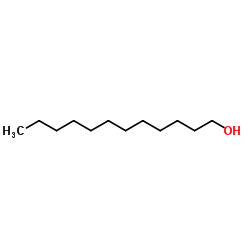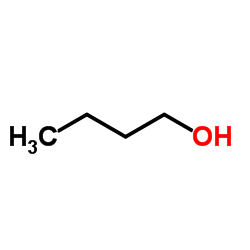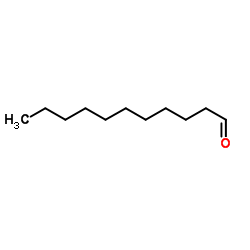Undecane

Undecane structure
|
Common Name | Undecane | ||
|---|---|---|---|---|
| CAS Number | 1120-21-4 | Molecular Weight | 156.31 | |
| Density | 0.7±0.1 g/cm3 | Boiling Point | 196.3±3.0 °C at 760 mmHg | |
| Molecular Formula | C11H24 | Melting Point | −26 °C(lit.) | |
| MSDS | Chinese USA | Flash Point | 60.0±0.0 °C | |
| Symbol |

GHS08 |
Signal Word | Danger | |
Use of UndecaneUndecane has anti-allergic and anti-inflammatory activities on sensitized rat basophilic leukemia (RBL-2H3) mast cells and HaCaT keratinocytes. In sensitized mast cells, Undecane inhibits degranulation and the secretion of histamine and TNF-α[ |
| Name | undecane |
|---|---|
| Synonym | More Synonyms |
| Description | Undecane has anti-allergic and anti-inflammatory activities on sensitized rat basophilic leukemia (RBL-2H3) mast cells and HaCaT keratinocytes. In sensitized mast cells, Undecane inhibits degranulation and the secretion of histamine and TNF-α[ |
|---|---|
| Related Catalog | |
| References |
| Density | 0.7±0.1 g/cm3 |
|---|---|
| Boiling Point | 196.3±3.0 °C at 760 mmHg |
| Melting Point | −26 °C(lit.) |
| Molecular Formula | C11H24 |
| Molecular Weight | 156.31 |
| Flash Point | 60.0±0.0 °C |
| Exact Mass | 156.187805 |
| LogP | 6.60 |
| Vapour density | 5.4 (vs air) |
| Vapour Pressure | 0.6±0.2 mmHg at 25°C |
| Index of Refraction | 1.419 |
| InChIKey | RSJKGSCJYJTIGS-UHFFFAOYSA-N |
| SMILES | CCCCCCCCCCC |
| Water Solubility | IMMISCIBLE |
CHEMICAL IDENTIFICATION
HEALTH HAZARD DATAACUTE TOXICITY DATA
|
| Symbol |

GHS08 |
|---|---|
| Signal Word | Danger |
| Hazard Statements | H304 |
| Supplemental HS | Repeated exposure may cause skin dryness or cracking. |
| Precautionary Statements | P301 + P310-P331 |
| Personal Protective Equipment | Eyeshields;Faceshields;full-face respirator (US);Gloves;multi-purpose combination respirator cartridge (US);type ABEK (EN14387) respirator filter |
| Hazard Codes | Xn: Harmful; |
| Risk Phrases | R36/37/38 |
| Safety Phrases | S26-S36-S24/25 |
| RIDADR | UN 2330 3/PG 3 |
| WGK Germany | 3 |
| RTECS | YQ1525000 |
| Packaging Group | III |
| Hazard Class | 3 |
| HS Code | 29011090 |
| Precursor 9 | |
|---|---|
| DownStream 10 | |
| HS Code | 2901100000 |
|---|---|
| Summary | 2901100000 saturated acyclic hydrocarbons。Supervision conditions:None。VAT:17.0%。Tax rebate rate:9.0%。MFN tariff:2.0%。General tariff:30.0% |
|
Determination of low levels of benzodiazepines and their metabolites in urine by hollow-fiber liquid-phase microextraction (LPME) and gas chromatography-mass spectrometry (GC-MS).
J. Chromatogr. B. Analyt. Technol. Biomed. Life Sci. 975 , 24-33, (2014) In this study, it is shown a method for the determination of benzodiazepines and their main metabolites in urine samples by hollow-fiber liquid-phase microextraction (LPME) in the three-phase mode. In... |
|
|
QSPR modeling of octanol/water partition coefficient for vitamins by optimal descriptors calculated with SMILES.
Eur. J. Med. Chem. 43 , 714-40, (2008) Simplified molecular input line entry system (SMILES) has been utilized in constructing quantitative structure-property relationships (QSPR) for octanol/water partition coefficient of vitamins and org... |
|
|
Evaluation of injection methods for fast, high peak capacity separations with low thermal mass gas chromatography.
J. Chromatogr. A. 1392 , 82-90, (2015) Low thermal mass gas chromatography (LTM-GC) was evaluated for rapid, high peak capacity separations with three injection methods: liquid, headspace solid phase micro-extraction (HS-SPME), and direct ... |
| Hendecane |
| n-Undecane |
| MFCD00008959 |
| n-Hendecane |
| Undecane |
| n-Undecane,Hendecane |
| EINECS 214-300-6 |
 CAS#:112-53-8
CAS#:112-53-8 CAS#:143-07-7
CAS#:143-07-7 CAS#:112-42-5
CAS#:112-42-5 CAS#:821-95-4
CAS#:821-95-4 CAS#:286408-72-8
CAS#:286408-72-8 CAS#:222190-76-3
CAS#:222190-76-3 CAS#:64-17-5
CAS#:64-17-5 CAS#:67-64-1
CAS#:67-64-1 CAS#:71-36-3
CAS#:71-36-3 CAS#:33083-83-9
CAS#:33083-83-9 CAS#:112-44-7
CAS#:112-44-7 CAS#:54894-16-5
CAS#:54894-16-5 CAS#:110955-02-7
CAS#:110955-02-7 CAS#:112-05-0
CAS#:112-05-0 CAS#:693-61-8
CAS#:693-61-8 CAS#:821-96-5
CAS#:821-96-5 CAS#:1653-30-1
CAS#:1653-30-1
